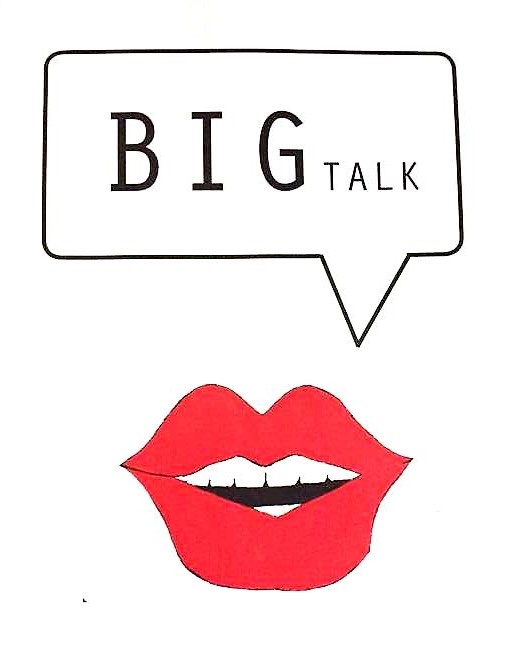Let’s make all talk “Big Talk”
A few days ago, I was watching a girl in the media center as she started an intricate pencil drawing. I wanted to go up to her and ask her what she was drawing because it looked very interesting. However, I decided not to, thinking it would be strange if I did. This missed connection and others came to mind after watching a particularly thought-provoking video project entitled “Big Talk”, created by Kalina Silverman, a student at Northwestern University.
According to The Huffington Post, Silverman was inspired by a particularly meaningful conversation with a friend (who hated small talk), and she wished that all conversations she had with people could be like that one. Here lies the crux of “Big Talk”– the idea that by engaging in mindless small talk, we lose the opportunity to really get to know a person. Silverman explains in her video that “[She] wanted to be able to go out, meet new people, and instead of just make small talk, actually have deeper, more meaningful conversations with them.” The video acts as a glimpse into the lives of a wide array of strangers of all ages, genders, and ethnicities. These stories may never have been shared if it was not for Silverman’s relentless search for meaningful conversations. She asked simple questions, but they proved difficult-to-answer. For example, she asked “What do you want to do before you die?” which produced intriguing answers.
After watching the video, I was moved by the often emotional and personal answers given by Silverman’s subjects. I began to wonder how many opportunities I had missed out on to meet truly interesting people, either by simply not noticing someone or worse, keeping my mouth shut despite wanting to comment. As someone who dislikes small talk, I wondered how many fascinating people at my own school I hadn’t met or might never meet. Intrigued by this thought, I decided that for one day I would hold my own “Big Talk” at Mercy High School.
I knew that the emotional aspect of Silverman’s video would probably not be found in my own conversations, but that was not really what I was searching for. I planned to randomly speak to staff and students I had never spoken with before. I had a set of three questions similar to those Silverman asked: “What do you want to do or accomplish before you die?”, “What is worrying you the most today?”, and “What was one of the happiest moments in your life?”. With this set of questions, I set out to see if I could learn a bit more about the people I saw every day.
As the experiment got underway, several things surprised me and several things didn’t.
What didn’t surprise me was the major worry of nearly all of the students I spoke with; nearly all reported that the thing worrying them the most was ‘grades’ or ‘school’. I also wasn’t surprised that after introducing myself and explaining I’d like to talk to them, nearly every person regarded me suspiciously and asked why. In the day and age we live in, it is understandable that we do not just run up to strangers and begin telling them about our day. Yet, the idea that nobody ever just wants to talk without some ulterior motive bothered me. Why was it so unbelievable to these people that I just wanted to say hello and get to know them?
For surprises, though, there were quite a few. One thing I had not counted on was the embarrassment/shyness I encountered in adults when they were answering a question. To some degree, I expected it from the students. Peer confrontation often makes revealing a vulnerable side of one’s self risky and uncomfortable. Yet, when adults nervously smiled, shook their heads, or even started off with the comment: “This is stupid, but. . .”, I was taken aback. I had assumed— wrongly—that ‘grown-ups’ would have no trouble answering questions coming from a student. It seems that the pervading feeling of self-consciousness and the unwillingness to open up has no age limit. Another aspect that surprised me (the part I loved the most) was that people had a strong willingness to talk once they were made to feel that their opinions mattered and they were not to be mocked or judged.
“I just love trains. I don’t know what it is, but that’s what I want to do one day— ride in the engine with the conductor.” This was one response to the ‘before you die ‘ question. Other answers to this question included to one day run a marathon and to “find a Starburst candy packet with a red one and a pink one, since they never get put together.” The ‘biggest worry’ question produced a diverse collection of responses, ranging from the health of ill family members, to the expected ‘school’, to “the safety of the girls that go [to Mercy].” The ‘happiest moment’ question led to face-splitting smiles and excited re-tellings of stories. One woman explained her son’s marriage, which prompted a viewing of the wedding photos. Another student described receiving her long-awaited acceptance letter to Mercy.
At the end of the day, I left school not only with a beaming smile on my face, but also knowing much more about 10 strangers than simply their cut and dried answers to three questions. But then again, that’s what ‘big talk’ is, isn’t it?

